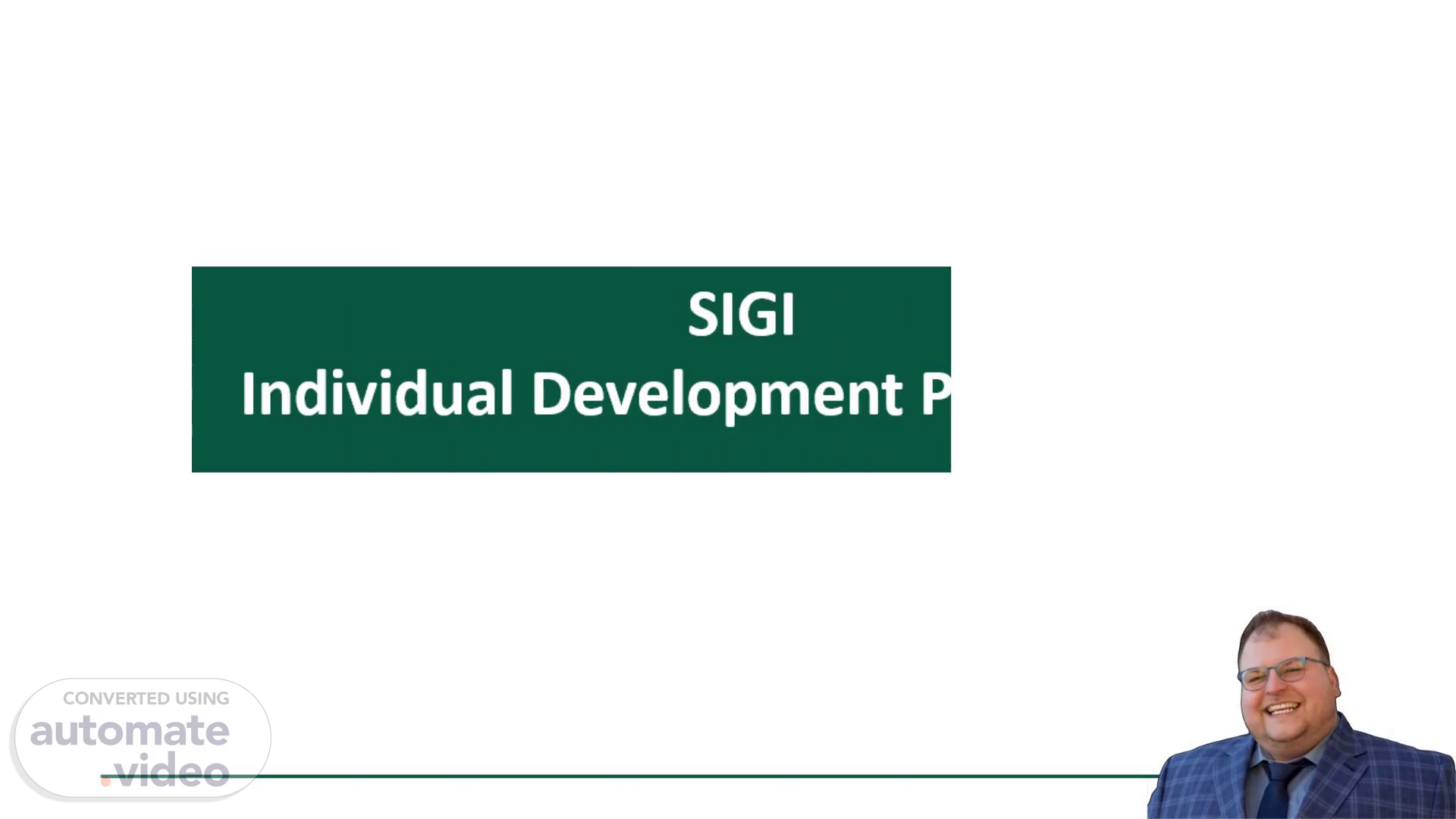Scene 1 (0s)
Welcome to the I-D-P Workshop. Today’s session will focus on Individual Development Plans (I-D-P--). Our goal is to help you understand how to create and utilize I-D-P's to enhance your professional growth and development..
Scene 2 (17s)
Here’s what we’ll be covering today: First, we’ll talk about how to get the most out of professional development. Then, we’ll go through the steps to build an Individual Development Plan. Finally, we’ll discuss the next steps and the timeline for implementing your I-D-P-..
Scene 3 (38s)
[Audio] Let’s talk about why an I-D-P matters to you. First off, it gives you clarity and direction. You’ll define your career goals and build a roadmap to get there. It’s not one size fits all; your I-D-P is personalized to your strengths, interests, and aspirations, so your growth feels meaningful and motivating. It also helps you build skills and confidence by setting goals that target areas you want to improve. And the best part? You’re in the driver’s seat. Your I-D-P empowers you to take ownership of your development and steer your career forward. Finally, your growth isn’t just good for you—it’s good for the team. Your I-D-P aligns your personal goals with the company’s direction, so as you grow, we all grow..
Scene 4 (1m 24s)
[Audio] The 70/20/10 Learning and Development Model is a recognized framework that outlines how individuals acquire knowledge and skills in a professional setting. According to this model, 70% of learning comes from experiential, on the job experiences; 20% from social interactions such as coaching and mentoring; and 10% from formal educational settings like courses and training programs. This model emphasizes that the majority of learning occurs through practical, real world experiences rather than traditional classroom instruction. It encourages organizations to focus on creating environments where employees can learn by doing, collaborate with others, and supplement their learning with structured programs. By understanding and applying this model, organizations can foster a more effective and holistic approach to employee development..
Scene 5 (1m 45s)
[Audio] Completing an I-D-P involves three main steps: Draft & Discuss, Gather Feedback, and Act & Update. Start by picking 1-2 areas of focus and developing a S-M-A-R-T plan that follows the 70/20/10 model. Gather feedback from performance reviews, 1-on-1 seconds with your leader, peer feedback, and self reflection. Finally, take steps towards your development goals, review your I-D-P plan monthly, and discuss it regularly with your leader..
Scene 6 (2m 14s)
[Audio] To create an effective I-D-P--, you need to clarify your career goals. Reflect on your past jobs: What did you love? What drained your energy? What themes do you see? Consider what matters to you professionally and whether you want to develop in your current role or prepare for a future role..
Scene 7 (2m 35s)
[Audio] Now, let’s do a self directed exercise. Review the list of satisfiers and select the top 5-7 that meet your professional needs. This will help you incorporate your motivations into your career development plan..
Scene 8 (3m 3s)
[Audio] Gathering feedback is essential. Read your review feedback, reflect on feedback from 1:1 meetings, and align with your leader on who should be part of the feedback process. Consider your strengths and areas of opportunity and how they align with your desired next step.
Scene 9 (3m 23s)
[Audio] When drafting your I-D-P--, pick no more than two areas for development. Complete the template, ensuring it follows the 70/20/10 guidelines and includes S-M-A-R-T goals. Schedule time to review your I-D-P with your leader, get input, and finalize it..
Scene 10 (3m 41s)
[Audio] To act on your I-D-P--, schedule classes (10%), identify the right mentor/coach (20%), and achieve development while doing your day job (70%). Take baby steps to adopt new skills and behaviors. Remember, the percentages are guidelines, not exact numbers of hours spent..
Scene 11 (4m 2s)
[Audio] Knowledge Check: Do you remember the model? 10% Onboarding courses, Lectures, Instructional Videos, Textbooks, Knowledge Base 20% Mentorship, Discussion Boards, Online Meeting Formats, Webinars, Social Media 70% On the Job Training, Gamification, Online Simulations, Virtual Reality, Scenario Based Learning.
Scene 12 (4m 22s)
[Audio] Here’s an example of a completed I-D-P template. Notice how it includes specific, measurable, achievable, relevant, and time bound S-M-A-R-T goals. Tracking progress and gathering feedback are key to making your I-D-P effective..
Scene 13 (4m 41s)
[Audio] Let’s clarify the roles in the I-D-P process. As an employee, you’ll attend training, prepare a draft I-D-P--, review it with your leader and HR, implement the plan, and provide monthly updates. Leaders will support you, provide feedback, make suggestions, and hold you accountable. HR will provide training, templates, and guidance..
Scene 14 (5m 3s)
[Audio] Ready to take charge of your growth? Let’s walk through how to kick off your I-D-P-. Step one: Initiate the conversation. Reach out to your leader and let them know you're interested in building an I-D-P--. It’s your roadmap to growth—so take the first step! Step two: Start drafting. Begin outlining your development goals and areas you’d like to grow in. This sets the stage for a meaningful 1:1 with your leader. Step three: Set S-M-A-R-T goals together. Collaborate with your leader to define goals that are Specific, Measurable, Achievable, Relevant, and Time bound. These goals will guide your progress. Step four: Stay consistent. Bring your I-D-P to every 1:1. It helps track progress, spark conversations, and keep your development front and center. Step five: As you hit milestones and complete sections of your I-D-P--, take time to celebrate! Growth is a journey, and every step forward matters. Take the first step as the development starts with you!.
Scene 15 (5m 7s)
[Audio] Thank you for joining in on this training. For additional questions, please reach out to your leader..
